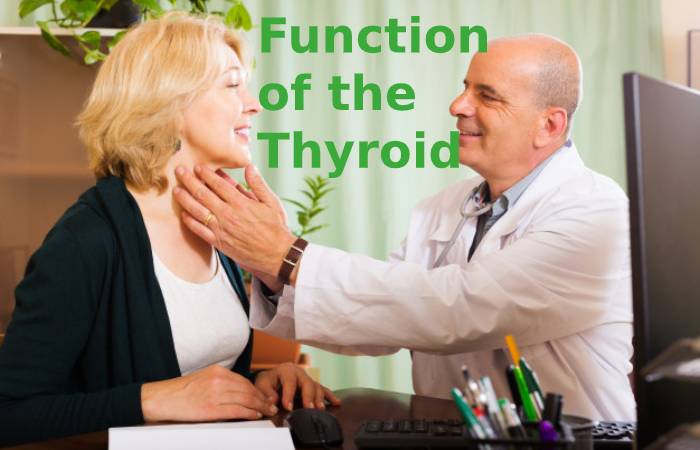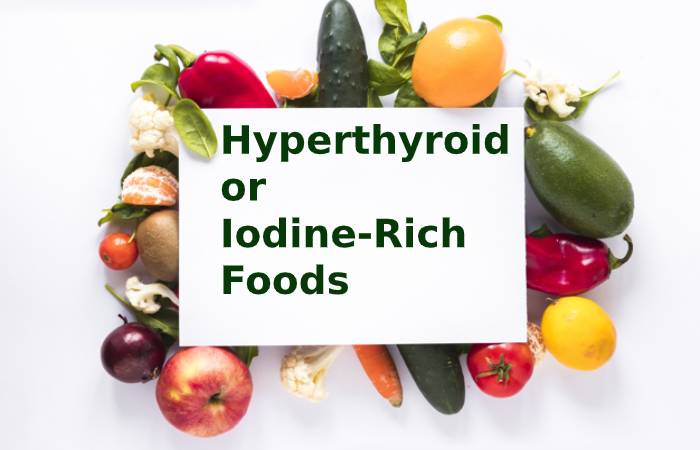The improper functionality of the thyroid gland will raise dysfunctional called Hypothyroidism and Hyperthyroidism. In this post, we mentioned both disorders and its natural treatment, also called the under active thyroid gland.
Table of Contents.
What is the Function of the Thyroid?

The thyroid gland present in the lower part of the thyroid cartilage in the front part of the neck.
It is a very essential and crucial organ in the human body. The main functionality of this organ is to produce hormones like T4(thyroxin) and T3 (triiodothyronine). These hormones will partially influence all organs of the human body, and these blend a vast amount of proteins, and also shows effect on the metabolism of carbohydrates. due to the above reasons, it has a crucial role in terms of the development of the human body and its growth
Hypothyroidism and Functionality of the Thyroid Gland
Hypothyroidism appears when the production of the hormones generated by the thyroid is impaired. Therefore it is insufficient to carry out all its functions correctly.
Hypothyroidism is the cause of a slowing metabolism, which can lead to weight gain, weakened physical condition, swelling, muscle pain, or depression. The hormonal changes to which women expose throughout their lives, make them up to 10 times more likely than men to suffer this alteration.
The alteration in the immune system Causes hypothyroidism
Other causes are:
- Diet iodine deficiency
- Radiotherapy treatments
- Removal of the thyroid gland.
- Thyroid nodules
- Intake of some drugs.
- Development of a viral infection
- An alteration occurs in the glands of the brain in charge of stimulating the thyroid (pituitary or hypothalamus). This type is called secondary hypothyroidism.
Main Symptoms
As I mentioned earlier, thyroid hormones are related to a large number of areas of our body. That is why the symptoms can be very varied and manifest in different areas, depending on which organs are affected by their functional activity.
The most common symptoms include :
- It increases body weight.
- Anemia
- Constipation
- Hair loss
- Fatigue
- In women, irregular menstrual cycles
- Tremors in the hands
- Lack of concentration
- Impaired development in children
Goiter is one of the consequences of an under active thyroid usually produced by a deficiency of iodine in the diet. It produces an enlarged thyroid to try to counteract the low production of thyroid hormones.
Sub Clinical Hypothyroidism

It will diagnose when the thyroid-stimulating hormone (TSH) elevates in the blood. However, nevertheless, the thyroid hormones T3 and T4 are with in normal limits. It means that thyroid failure is mild. It can affect 10% of women over 40, causing them to live permanently tired, with muscle aches and sleep. The weight gain that occurs can go unnoticed since it usually coincides with menopause.
In these cases, the endocrine doctor does not usually prescribe medication, but this does not mean that it does not cause symptoms and that there are overweight problems. the diet will be of great importance, and clinical hypothyroidism, there is no single consensus on whether to treat it with thyroid hormones, so studying each case is essential.
The alteration also will relate to an increase in cardiovascular problems since it associates the metabolism of fats, producing an increase in total cholesterol and blood triglycerides.
Diet for Hypothyroidism
Once the disease recognizes through a blood test that measures our hormone levels, in addition to the prescribed medication treatment, following a diet prescribed by a nutritionist, can be of great help.
For the thyroid gland to make the hormones T3 and T4, it needs iodine. This mineral will obtain through the foods of our diet.
Hyperthyroid or iodine-rich foods to Improve Functionality of the Thyroid Gland

A healthy adult needs to ingest about 200 mcg of iodine daily. According to the WHO (World Health Organization), 40% of the world population is at risk of having a deficit of this mineral. The Galician Society of Endocrinology, Nutrition, and Metabolism has studied the areas of Spain with the most significant lack of iodine.
Soil is a good source of iodine, and therefore, depending on the iodine richness of the farmland, the vegetables consumed will have a greater or lesser amount of this mineral. Another important source of iodine is the sea, so we will recommend consuming seafood such as fish and shellfish.
It is advisable to watch with the consumption of algae since its iodine content is so high that it could alter the thyroid gland. Today, essential strategies are applying to avoid iodine deficiency in the diet. The most important is the salt iodization table (not to be confused with the sea salt that iodine loses in its preparation).
The other is to administer fortified feeds to milk-producing cows, so dairy consumption is also a good source of this mineral.
Other nutrients to consider in Functionality of the Thyroid Gland
In addition to iodine, there are other vital nutrients to ensure the proper production of T4 and its conversion to T3. These are:
- Zinc: present in red meat, seafood, wheat germ, and nuts.
- Iron: It present in all meat and fish in its most bio-available form
- Manganese: It abundant in nuts, seeds, and whole grains.
- Vitamin A: in the form of beta-carotene through green vegetables (chard, spinach), red (tomato, pepper), and orange (carrot, mango, pumpkin, sweet potato).
- Selenium– Found in Brazil nuts, whole grains, shellfish, and dairy.
Goitrogenic foods
There are foods of plant origin that contain some compounds that can cause goiter and disorders of the thyroid gland. These substances are a type of anti nutrients (glucosinolate, thiocyanate, and isothiocyanate) that hinder the use of iodine by the body, preventing it from being used to make thyroid hormones.
Foods with goitrogen antinutrients are mainly:
- Cruciferous: cabbage, collard greens, Brussels sprouts, cauliflower, cabbage, broccoli.
- Turnip, mustard seeds have also come under antinutrients.
- In less quantity: spinach, carrot, radish.
- Walnuts, pine nuts, peanuts are also called antinutrients.
The way to avoid the goitrogen effect of vegetables is to consume them cooked or fermented; in this way, the harmful substances disappear, and we leave with the healthiest part of the food. It is important to emphasize that heat destroys this harmful effect and that even if you suffer from hypothyroidism, these foods should not avoid as long as they are consuming cooked since there is no harm to health. In the case of nuts, it is advisable to take them toasted.
Foods to avoid
A person with hypothyroidism should avoid consuming:
- Raw red cabbage, cabbage, and radish salad.
- Drink broth or soup or water resulting from boiling goitrogenic foods.
- Soy and soy products as they increase the fecal excretion of the hormone thyroxine. If you suffer hypothyroidism and consume soy-based products, it will be necessary to review the dose of the hormone levothyroxine by your endocrine doctor
Home Remedies for Functionality of the Thyroid Gland in Hyperthyroidism

If hypothyroidism is related, to iodine deficiency, but hyperthyroidism, consumption of foods rich in mineral such as dairy, fish, shellfish, and some cereals such as oats, rye, also there are some infusions and juices that could benefit us enormously, as well as a series of foods.
Infusion of mint and lemon balm
- Consuming mint and lemon balm infusion is an excellent treatment for hyperthyroidism. A tablespoon of lemon balm (or an envelope or paper bag) and a few mints leaves for each cup of water.
- The preparation is like the rest of the infusions that do not need decoction. We boil the water and add it to the container, either teapot or cup, where the lemon balm and mint are. Leave it for 10 minutes. Then we can add honey, molasses, panela, or agave syrup to taste.
Eating Foods Rich in Goitrogens
Goitrogens are a compound that is found naturally in broccoli, kale, cabbage, Brussels sprouts, broccoli, cauliflower, radishes, and turnips, among others and helps reduce iodine levels in the organism.
Radish smoothie with lemon
Blend the radishes and squeeze the lemons, and we will get this compelling mixture. With this shake, we can help reduce the secretion of the hormones thyroxine and triiodothyronine by the thyroid gland


